Research Tuesday: Supporting Children with Severe and Profound Multiple Disabilities
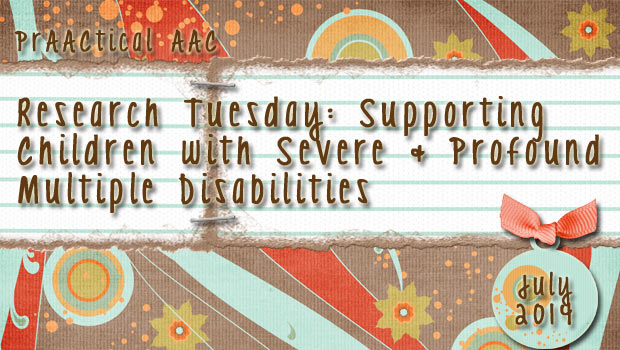
What do we know about the best ways to provide communication support to individuals with severe and profound multiple disabilities (PMLD)? PMLD is a term that generally refers to people who experience profound cognitive limitations in addition to sensory and/or physical disabilities. Many of these individuals have complex medical histories and chronic health concerns. Often, the communication difficulties experienced by individuals with PMLD cause them to be isolated and excluded from many social and educational opportunities. Despite their many challenges, there is evidence to suggest that AAC supports can help these children develop their communication skills. Not much is known, however, about how to structure the AAC intervention to maximize learning.
In this study, Harding and her colleagues sought to reduce isolation and promote personal autonomy by providing AAC supports to two children with PMLD. As other researchers have demonstrated the positive impact of AAC on people with PMLD, this group of researchers focused more specifically on the process by which happens. Specifically, they looked at the processes for planning and implementing AAC with two 6 year old children with PMLD. Both children were in the same special education classroom. Along with their cognitive challenges, both had physical disabilities. In addition, they both had episodes of challenging behavior (most likely related to their difficulties in communicating) and one had vision deficits. They communicated using prelinguistic strategies, such as vocalizing to gain attention. Both children demonstrated a desire to engage and communicate but neither had any personalized AAC supports that were implemented consistently in the classroom.
Informal assessment activities and observations were used to gather baseline information on each child over a 3-week period. The researchers used that information along with input from school personnel to develop communication materials for both children. Researchers and school staff collaborated to develop communication goals, materials, and activities based on each child’s strengths and interests. The focus was on using visual cues (e.g, gestures, objects, photos), touch, and simplified language to build receptive and expressive communication.
The intervention was provided in the classroom across 3 activities (lunch, music, free play) and included strong collaboration with the classroom staff collaboration. Each child participated in 2 30-minute sessions twice a week for a total of 12.5 hours of individual instruction over a 5-week period. Classroom aides attended all of the intervention sessions and were encouraged to use the visual cues and implement the strategies throughout the week. Instructional procedures varied for each child but were based on choice-making and requesting specific objects and activities using individualized AAC materials (e.g., photos, object symbols) and highly motivating referents. The implementation procedures are described in detail in the article for anyone wishing additional information.
Sessions were videotaped and 5-minute recordings were also made before starting and after finishing each session. The video clips were rated by the researchers, classroom staff, parents, and 4 naive raters. All raters used the observation form from the Pragmatics Profile of Everyday Communication Skills (PPECS; Dewart & Summers, 1995). No scores were reported for data reliability or treatment integrity.
Both children made gains during the intervention period. The first child, who use photos and picture symbols, required prompting to make choices at the start of the protocol and progressed to making some independent choices beginning at Session 5. The changes from pre to post intervention were significant in 1 out of the 3 activities. The second child, who used object symbols, required progressively less physical assistance over the course of the intervention. The changes from pre to post intervention were significant across all three activities.
Gains were seen in all four areas measured by the PPECS (Expression, Comprehension, Social interaction, Behavior). Expressively, both children increased their skills with a variety of communicative intents. In terms of receptive skills, only the first child evidence significant growth, Behavioral changes included decreased occurrences of challenging behavior and increased engagement. More detailed information about the specific gains made by each child are described in the article.
For children with PMLD, progress is often slow. This small study demonstrates that the consistent implementation of AAC supports can help these children make measurable progress in communication and behavior. Let’s face it: 5 weeks of intervention is not much time. If children with the most severe challenges can learn and develop new communication skills in that amount of time, it makes us wonder…Given the right supports, what else is possible?
:::::::::::::::::::::::::::::::::::::::::::::::::::::
Harding, C., Lindsay, G., O’Brien, A., Dipper, L., & Wright, J. (2011) Implementing AAC with children with profound and multiple learning disabilities: A study in rationale underpinning intervention. Journal of Research in Special Educational Needs, 11, 2, 120–129.
Link to the article: http://www.nasen.org.uk/uploads/publications/225.pdf
Filed under: PrAACtical Thinking
Tagged With: classroom, PMLD, Research Tuesday
This post was written by Carole Zangari

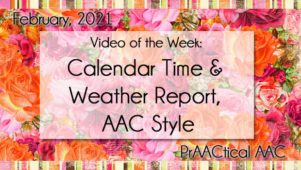
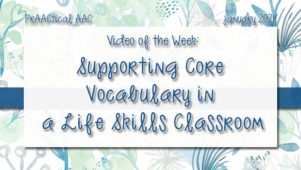
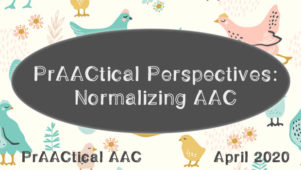
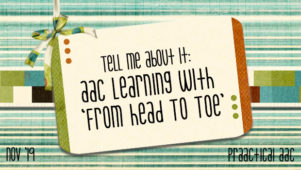
2 Comments
Great find, Carole,
Thanks so much for sharing. It’s great to see research supporting AAC with our most challenging children. These kids are my favorites and I am happy to have research to support our rose colored glasses practice! Keep it up! 🙂
Vicki
Vicki, I was thrilled to find this study and just had to share it. I hope that more and more SLPs will share your passion for this population. With the right mindset, solid strategies, and a team approach, we can make a real difference, as you well know. Thanks for all you do and for the encouraging comment!